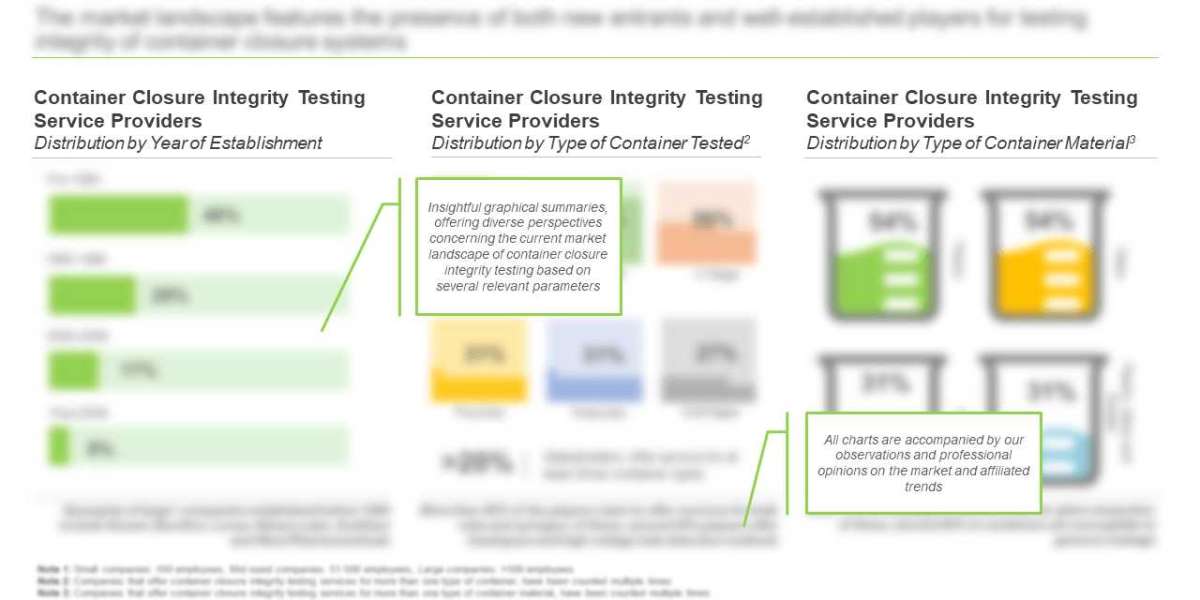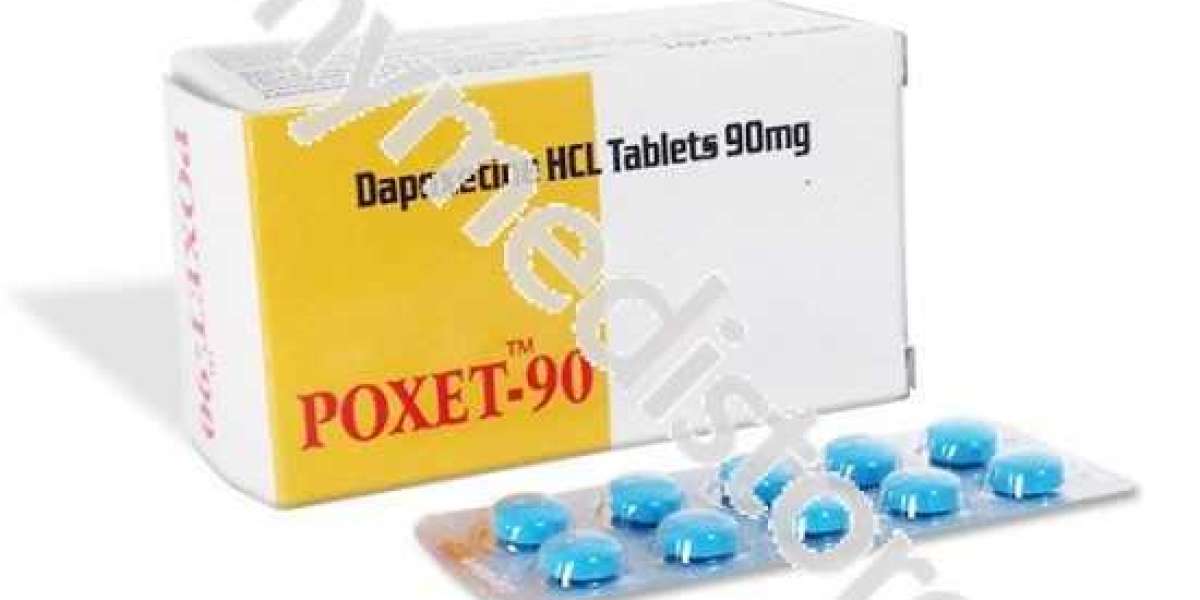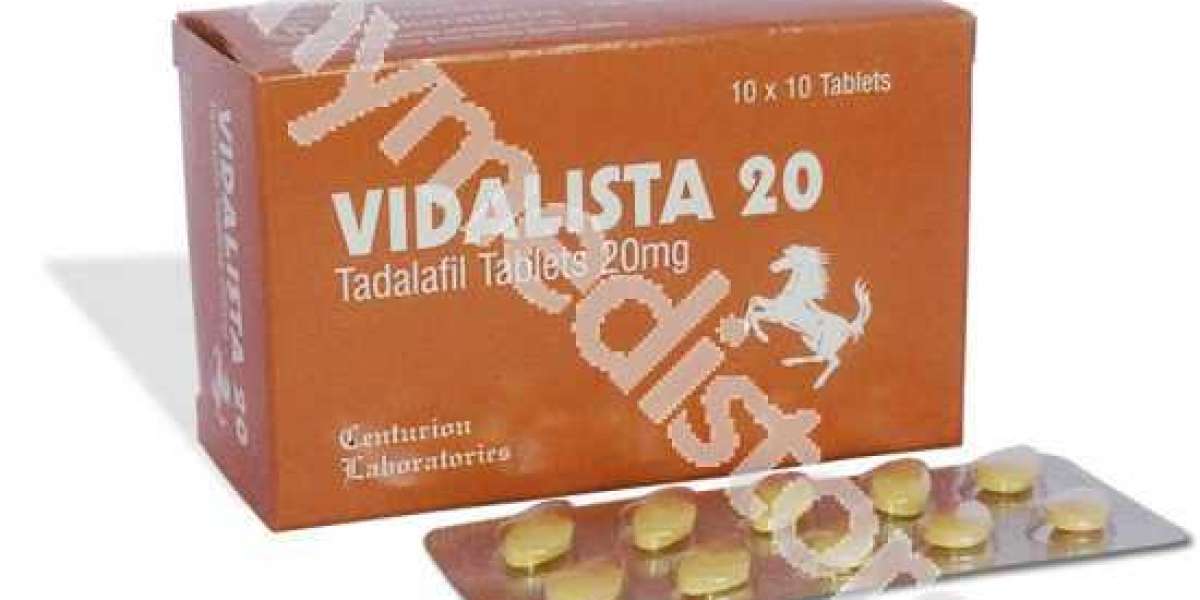To order this 230+ page report, please visit https://www.rootsanalysis.com/reports/container-closure-integrity-testing-services-market.html
Key Inclusions
- A detailed assessment of the current market landscape of container closure integrity testing service providers, featuring information on their respective year of establishment, company size, location of headquarters, location of analytical facilities, type(s) of analytical method(s) offered (probabilistic methods and deterministic methods), type(s) of probabilistic method(s) (microbial ingress analysis, aerosol testing, dye ingress analysis, bubble testing, and tracer gas detection (sniffle mode)), type(s) of deterministic method(s) offered (helium leak analysis, vacuum / pressure decay analysis, mass extraction analysis, high voltage leak detection, headspace analysis, and others), leakage susceptibility (solid, liquid, and gas), type(s) of container(s) tested (vials, syringes, cartridges, pouches, IV bags, ampoules, and others) and accreditations (EMA, FDA, USP, ATSM, JP, ICH Q2, ISO, and others).
- A competitiveness analysis of container closure integrity testing service providers based on various relevant parameters, such as supplier power (based on the experience / expertise of the service providers and company size), service strength (type(s) of analytical method(s) offered, type(s) of probabilistic method(s), type(s) of deterministic method(s), and type(s) of container(s) tested) and service applicability (type(s) of container material(s) and leakage susceptibility).
- Tabulated profiles of the key players providing container closure integrity testing, which are headquartered in North America and Europe. Each profile includes an overview of the company, information on the financial performance (if available), service portfolio, location of analytical facilities, type(s) of analytical method(s) used, types(s) of container(s) tested, recent developments, and an informed future outlook.
- A case study providing the list of equipment used by various manufacturers to test container closure integrity, highlighting their key features, type(s) of analytical method(s) offered, type(s) of container(s) tested, container material(s) of container closure integrity testing technologies.
- A detailed competitiveness analysis of container closure integrity testing equipment, taking into consideration several relevant parameters, such as the product strength (scale of operation, type(s) of analytical method(s) used) and product applicability (type(s) of material(s) used, and type(s) of container(s) tested).
- A regional capability assessment framework, which compares the container closure integrity testing capability across key geographies, based on a number of parameters, such as the number of container closure integrity testing service providers, number of analytical testing facilities, number of container closure integrity technology manufacturers in that particular geographical region, number of container closure integrity testing technologies, number of patents and demand of container closure integrity testing service in that particular geographical region.
- A detailed analysis of the various container closure integrity testing analytical techniques. It highlights the popularity of analytical techniques (in terms of number of service providers offering analytical technique for testing purpose, equipment providers developing equipment for particular technique, number of equipment and number of container closure systems tested) and offers a benchmark to compare analytical techniques.
- A case study on the use of robotic machinery in pharmaceutical manufacturing and fill / finish operations, highlighting the advantages of using automation / automated technologies in such processes. Further, it presents the profiles of industry players that provide such equipment for aseptic processing of pharmaceuticals.
- An in-depth analysis to estimate the current and future demand of container closure integrity testing service based on various relevant parameters, such as type of container closure system tested and type of material used, across different regions, for the period 2022-2035.
Press Release: Variation 4 (Format 5)
- A discussion on affiliated trends, key drivers and challenges, under a comprehensive SWOT framework, which are likely to impact the industry’s evolution, including a Harvey ball analysis, highlighting the relative effect of each SWOT parameter on the overall industry.
The report features the likely distribution of the current and forecasted opportunity across important antibody purification services market segments, mentioned below:
- Analysis by Type of Container Closure System
- Vials
- Syringes
- Cartridges
- Analysis by Type of Container Material
- Glass
- Plastic
- Analysis by Geographical Regions
- North America
- Europe
- Asia Pacific
- MENA
- Latin America
- Rest of the World
The report also features inputs from eminent industry stakeholders, according to whom, several stakeholders are seeking services from container closure integrity testing service providers in the foreseen future. The report includes detailed transcripts of discussion held with prominent industry representatives
To request sample pages, please visit https://www.rootsanalysis.com/reports/container-closure-integrity-testing-services-market.html
Key Questions Answered
- Who are the leading players offering container closure integrity testing service?
- What is the relative competitiveness of container closure integrity testing service providers?
- In which regions are majority of the container closure integrity testing facilities located?
- Which equipment has the competitive edge over the other container closure integrity testing equipment?
- What is the current and future demand for container closure integrity testing services?
- How is the current and future opportunity likely to be distributed across key market segments?
You may also be interested in the following titles:
- Sustainable, Biodegradable and Eco-Friendly Packaging Providers Market: Industry Trends and Global Forecast, 2021-2035
- Novel Drug Reconstitution Systems Market: Industry Trends and Global Forecast, 2021-2030
- Global Pharmaceutical Vials Market: Industry Trends and Global Forecasts, 2021-2030
- Cell Therapy Packaging Products and Services Market: Industry Trends and Global Forecast, 2021-2030
- Pre-Sterilized / Ready-to-Use Primary Packaging Market: Industry Trends and Global Forecast, 2021-2030
About Roots Analysis
Roots Analysis is one of the fastest growing market research companies, sharing fresh and independent perspectives in the bio-pharmaceutical industry. The in-depth research, analysis and insights are driven by an experienced leadership team which has gained many years of significant experience in this sector. If you’d like help with your growing business needs, get in touch at info@rootsanalysis.com
Contact Information
Roots Analysis Private Limited
Ben Johnson
+1 (415) 800 3415
Facebook - https://www.facebook.com/RootsAnalysis
LinkedIn - https://www.linkedin.com/company/roots-analysis/mycompany/
Twitter - https://twitter.com/RootsAnalysis
Medium - https://medium.com/@RootsAnalysis
Pinterest - https://in.pinterest.com/RootsanalysisPin/_saved/







